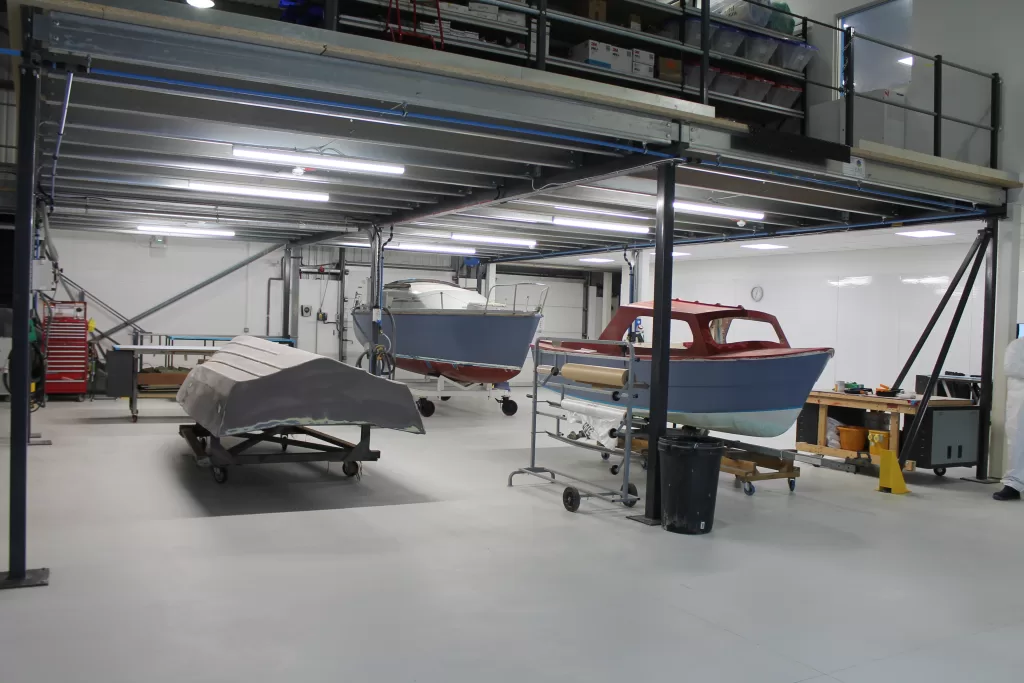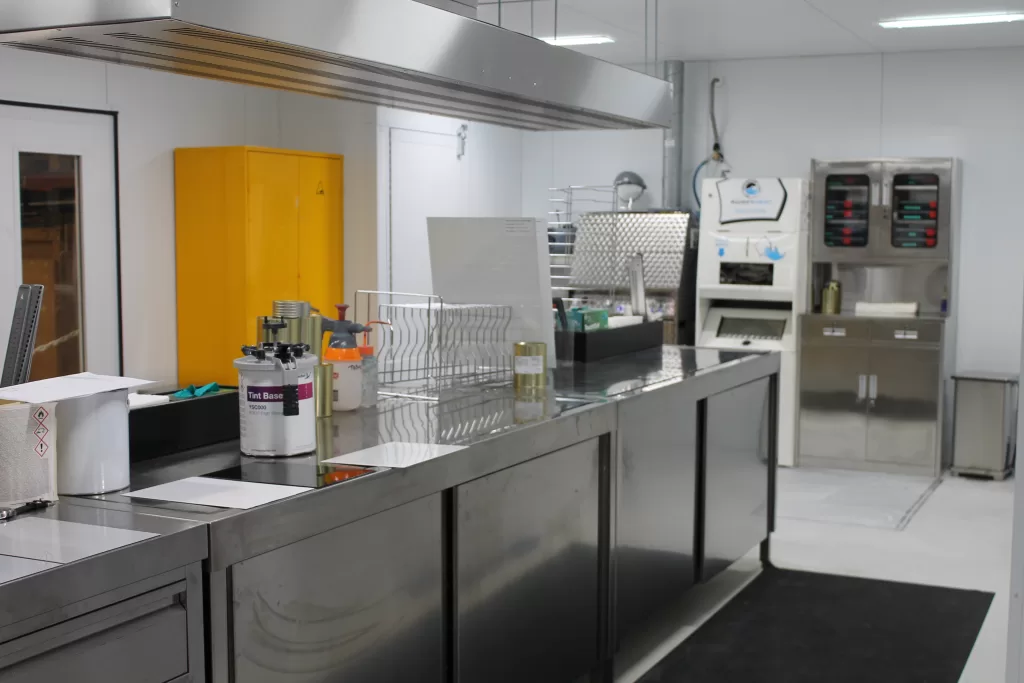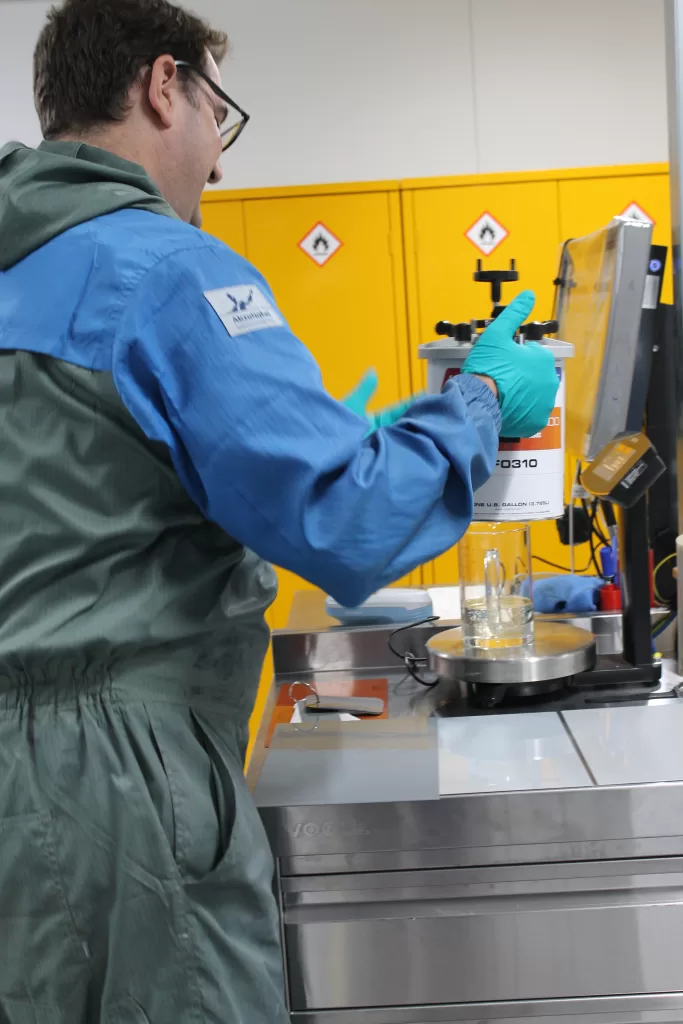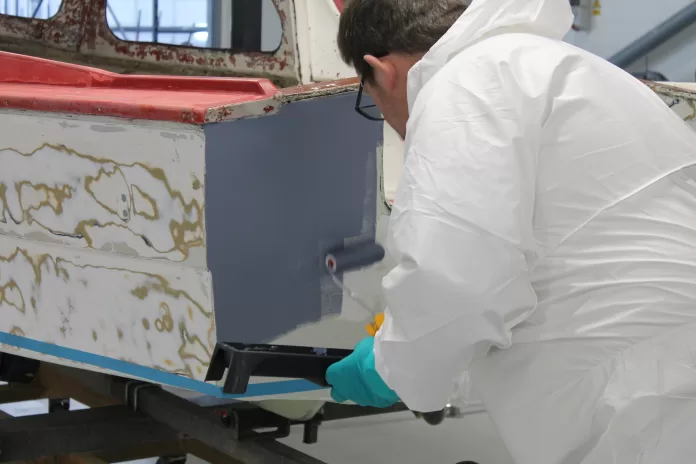As boaters become more demanding and new regulations are introduced, manufacturers need to be ever more active with their research and development.
Research and development are key to any manufacturing company and that is certainly the case for Awlgrip and International, two of AkzoNobel’s yacht paints and coatings brands.
The company’s original Southampton Yacht Paint Application Centre opened in 2008 and has been used by more than 600 trainees on a variety of products and skills for more than 600 trainees.
Earlier this year, a new extension was opened, with two new spray booths and an adjoining laboratory opened earlier in the year at a cost of around £350,000.
The centre of excellence now provides AkzoNobel with a base to trial and test products, systems and technology alongside product application training.
Climatic control
Work on phase two, which will include a climatic control spray booth with the ability to raise and lower temperature and humidity to replicate climatic conditions anywhere in the world, is planned to begin in 2024 – one of the few companies to have such advanced facilities.
Further developments in line with market trends, including the use of robotics and automation, will be implemented in 2025.
The first phase offers an opportunity for applicators to work with AkzoNobel to help improve their efficiency and enhance their application skills.

It’s also used by AkzoNobel to develop and test new products, applications, and techniques, with future developments set to explore how robotic applications could be used to help improve productivity and repeatable quality.
Latest generation
So far, many products have been put to the test in the laboratories, including B-Free Explore, International’s latest generation of fouling control products.
“The ARC will set a new standard of research and development and training,” said Jemma Lampkin, AkzoNobel’s yacht commercial director.
“We are passionate about connecting our research and technical teams with applicators who want to be best in class by improving their product, technical and application knowledge with state-of-the art equipment.”

She added: “The testing facility is first class. Yacht paint has to stand up to the most challenging conditions from the elements, and being able to evaluate the impact of regional climate variations will inform and improve new product development and innovation in application technique for the next 20 years and beyond.”
Industry partners
From developing new colours, toners, and tints to new fouling control systems to working with industry partners such as spray gun manufacturers and sandpaper suppliers, the new centre provides the facilities to carry out extensive testing and sustainably adapt products.
One growing area of more sustainable products is in the use of waterborne technology which the company says it has seen a big shift in over the last 12-18 months.
And one of the products using this technology which technicians and researchers are excited about is a new fouling control system that is expected to be launched to the market next year under the B-Free label.
Testing is currently taking place with promising results in a variety of places around the world, from Florida to Italy, the Middle East and Australia to see how effective it is in different sea temperatures and conditions.
Repeatability
From repeatability of results and quality control to the effect of the products on human health, AkzoNobel says it needs to keep up with today’s fast-moving culture.
However, for AkzoNobel, sustainability is not just important when developing products but also in relation to the development of the centre and the company’s overall carbon footprint.

Boats that may otherwise have been sent to landfill are rescued and used to test the application characteristics of a range of products from primers to topcoats.
With the redevelopment itself, 95% of materials replaced have been either repurposed or recycled, explained site manager and R&D section leader, Gareth Thomas.
“The team behind the project have brought innovation to the planning and execution of the build and the finish is outstanding,” he said.
“The site pushes the boundaries and will further establish AkzoNobel’s position in the heart of the yacht community for years to come.”

